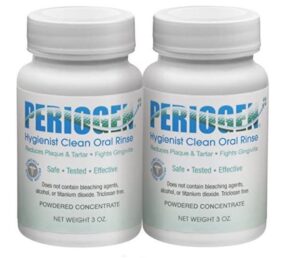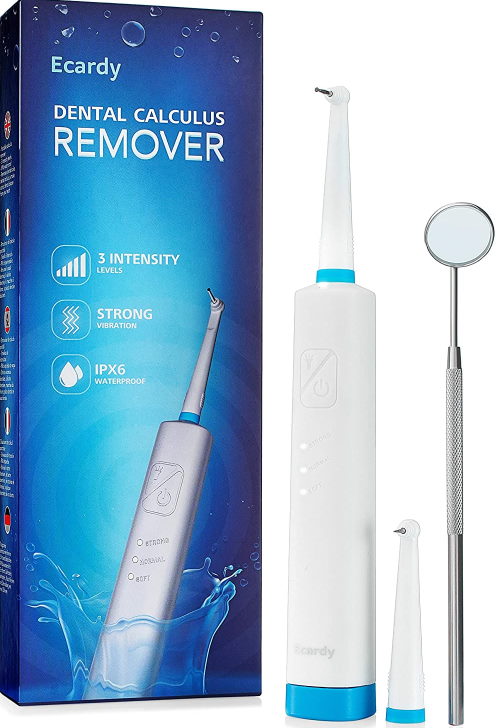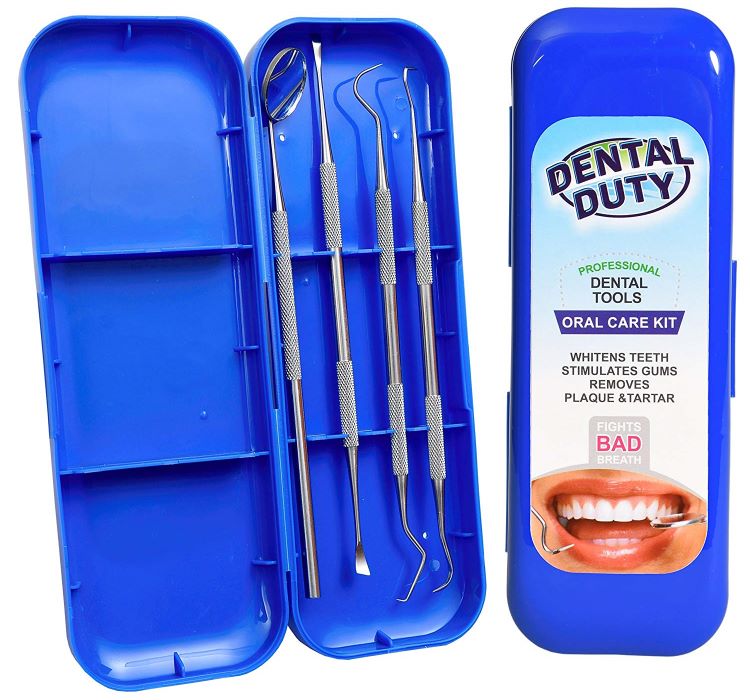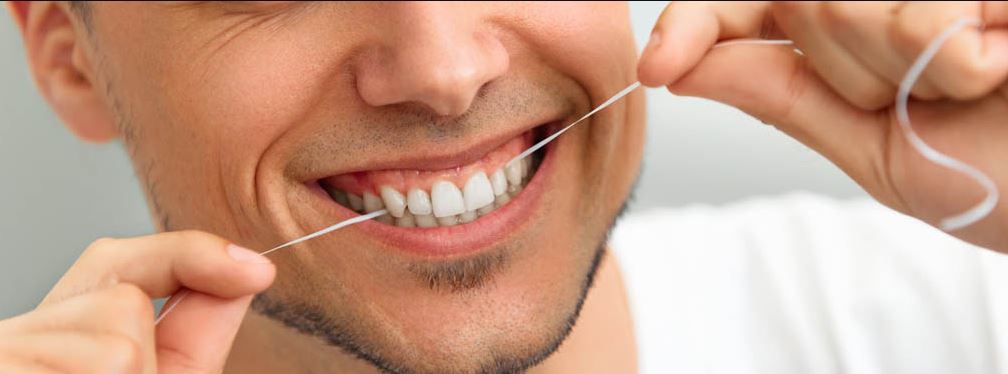How To Remove Tartar Buildup Yourself?

Some level of tartar buildup is natural and completely unavoidable. Tartar is the hardened state of dental plaque, which is more difficult to remove than the soft dental plaque. Even people who brush and floss daily still develop tartar buildup. Fortunately it’s possible to remove tartar yourself without visiting the dentist.
Steps to remove plaque and tartar

Periogen is the only mouth rinse that has proven to dissolves tartar. It’s available here
- You want want to assess the problem first with plaque disclosing tablets
. These tablets reveal the location of dental plaque, so you can prevent further buildup of calculus (tartar is also known as “calculus” in dentist jargon). It’s better to remove dental plaque now, then wait until it turns into tartar.
- For the hard calculus removal itself: Get this tartar removal tool for home use
and this Periogen mouthwash
. The DIY tools are designed to remove tartar buildup yourself, as they are built with softer metal than those used by professionals. It’s recommended to use these kits in conjunction with a small table mirror. Also make sure that you have a steady hand and healthy gums.
- Then the best way to remove plaque from your teeth: use a medium-hard toothbrush
, dental floss, and rinse with Periogen mouthwash (see above)
. It’s the only mouthwash on the market that dissolves tartar. However, due to it’s aggressive nature it’s best to use this temporarily, and only sporadically for maintenance. Rinse with a less-aggressive mouthwash for daily use.
Afterwards, you can use the plaque disclosing tablets again to evaluate your progress. This is a cheap and effective method of removing tartar yourself, but keep in mind you still need to visit a dentist at least twice a year. They have more professional tools and can reach areas you simply cannot reach yourself.

Consider getting your own electronic tartar removal tool
Why calculus buildup matters
- Gum disease (Gingivitis) is the most important reason for teeth removal among adults.
- Dental plaque and tartar buildup is the number one cause of Gingivitis.
Conclusion: take tartar buildup seriously. Or actually – take dental plaque buildup seriously, since this is the precursor of tartar buildup.
Related article: How to Get Rid of Plaque
Calculus/tartar build up also doesn’t look good. It has a yellowish color, which is not the color that you want to show off when trying to make a good impression. Keep in mind that maintaining good dental hygiene, is healthier and cheaper than buying something later to reverse the negative effects – such as teeth whitening products.

Calculus buildup itself is also self-perpetuating; the more calculus you have, the more plaque attaches to your teeth. The more dental plaque you have, the more tartar buildup and ultimately the more gingivitis. Dental plaque and tartar will slowly degrade the health of your gums. No one needs tartar, and no one needs to see that either.
How to remove tartar from the back of teeth

Remove tartar at home with this oral care kit like the one above
It’s a little bit more tricky to remove tartar buildup from the back of teeth at home, because you can’t see this area while cleaning your teeth. The oral care kit mentioned above comes with a mirror, so you can determine where the worst buildup is located, and see if you are making progress. These tools are made of softer metal than the tools your dentist uses to prevent damage to your tooth enamel.
How to floss
Flossing helps protect your teeth from plaque and calculus buildup and is a necessary complement to brushing. It removes interproximal plaque and prevents calculus between your teeth.
Pull a piece of dental floss, wrap it around your middle fingers and hold it between your thumb and index fingers. Pull the floss taut and gently and guide it between your teeth then move it back and forth in a zig-zag motion. Be sure to push the floss below the gumline on each tooth to remove as much plaque as possible. Pull the floss out from between your teeth and wind it through your fingers so you have a clean section ready to use on the next tooth.

Warning: How NOT to remove tartar from teeth
We warn you against using the following DIY home remedies:
Brushing your teeth with baking soda or activated charcoal
Place the baking soda on a wet toothbrush and brush your teeth gently with it then rinse thoroughly. You can also add some salt to the baking soda and use the mixture in the same way stated above. A more recent trend is to use activated charcoal for the same purpose. Although both methods are likely to work for calculus removal, it is unclear what the long term effects will be for your teeth enamel. There is a risk that you will also remove the “good” parts of your teeth.
Using Orange peels
Rub an orange peel onto your teeth for about 2 minutes, leave to rest for another 2 minutes then rinse. You can also mash your orange peels and use the paste directly on your teeth.
The vitamin C in orange peel is supposed to fight the microorganisms in your teeth, while the limonene dissolves the tartar buildups. There is no scientific evidence for this method, and the acidity and sugars could potential break down your enamel. Not recommended.
Tartar Removal with Aloe Vera
Now this alternative method might actually work. First extract Aloe Vera’s pulp and rub it on your teeth for a few minutes before rinsing with water. This remedy should be used twice a day for a satisfying result.
Aloe Vera has scientifically proven antiseptic antibacterial effects against tartar-causing bacteria. The antioxidants in Aloe Vera also remove bacterial radicals for a quick healing of your gums. There is scientific evidence for this method, although it is unlikely to remove heavy tartar buildup.
Visit the dentist at least once a year for thorough tartar removal
The purpose of this article is to promote knowledge of dental care that can be performed from home. It is not intended to be a replacement for professional dental advice, diagnosis or treatment. It is especially useful for patients who cannot afford, or are too anxious to visit a dentist. If none of the methods recommended above work, then always seek the advice of a qualified health care provider. In general, it is highly recommended to visit your dentist or oral hygienist at least once a year.
